BLOG
Crafting a Nature Positive Tourism Strategy

If you want your business to work for nature, you need a strategy. Powerful statements and piecemeal actions, however well-intentioned, can only take you so far. To make meaningful changes, there has to be a proper plan. But what does that look like? And where do you start?
Why do you need a strategy?
Having a business strategy for nature is increasingly common. From consumers to investors, many people look for this when deciding whether to use or support your business. A strategy can also help with your environmental reporting – a requirement that is constantly expanding, especially after the global adoption of the Biodiversity Plan in 2022 and with the EU working on new far-reaching legislation
Isn’t it a lot of work?
Creating a strategy for nature may seem like a huge job, but it doesn’t have to be overwhelming. For a start, it isn’t just one more sustainability-related strategy. Sustainability is all about nature, so a nature strategy unites all your sustainability initiatives under a single set of goals and provides a context to streamline and prioritise them.
Ultimately, a nature strategy is an investment. It puts your business in a strong position to respond to the ever-increasing focus on these issues. From public communications to ESG reporting to regulatory compliance, once you have it you won’t know how you lived without it
Where to start
The basic steps for integrating nature protection through a business are straightforward. They have been presented in many different ways over the years, but recently several expert organisations have rallied around the ‘ACT-D’ formula – Assess, Commit, Transform and (continuously) Disclose. This is the presentation used by Business for Nature and their Now for Nature initiative.
At ANIMONDIAL we use the Nature Positive Tourism Roadmap. This has been developed specifically for the Travel & Tourism sector and is endorsed by the Nature Positive Tourism Partnership (the World Travel & Tourism Council, UN Tourism and the World Sustainable Hospitality Alliance). The Roadmap follows the same principles as other guidance but is designed to be more accessible for smaller businesses and focus on issues that are particularly relevant to T&T.
Scoping
Before creating your strategy, you need to have some context. What does the strategy cover and what is it intended to achieve? To answer these questions, you need to make decisions on issues like materiality, scope and value chain. This last one is especially important for T&T where so many businesses can be involved in delivering the overall service, and hence be responsible for the impacts it has.
Assessment
Now you need to make a full assessment of your nature-related risks, dependencies and impacts. There can be quite a lot to consider at this stage, so make sure you have suitable internal expertise and capacity or use an external consultancy to help.
One tried and tested solution is ANIMONDIAL’s Natour Impact assessment tool. This is tailored to the T&T industry and provides a comprehensive evaluation of your business processes to safeguard nature, animal welfare, communities and sustainable consumption. We will walk you through the process, with all the information submitted through our online portal, before providing you with a full report, debrief and individual recommendations for next steps. (To find out more, just drop us a line.)
Defining your policy
Based on the findings of the assessment, you need to define your response. This is likely to take the form of a commitment or a nature policy, which sets outs the overall goals that the strategy will enable you to meet. This should cover all the key issues in ways that are relevant and practical for your business, and specify actionable goals.
Developing meaningful, progressive policy statements is something we have lots of experience of at ANIMONDIAL. Whether or not you have done the full Natour Impact assessment, if you want help creating a policy statement that gives you purpose and direction, don’t hesitate to get in touch !
Getting to work
Now you are ready to start work on the strategy. This will lay out the actions that you plan to take in order to achieve the policy goals.
Remember that existing strategies, for instance for carbon emissions, plastics use or energy consumption, can be slotted into the nature strategy as they are. There is no need to reinvent the wheel! However, this may be a good time to review them and ensure that they align with your overall business goals for nature.
Reduce
Obviously, a critical element of the strategy will be reducing your negative impacts. The key principle for doing this is the Mitigation Hierarchy. This is defined slightly differently in different contexts but for Nature Positive Tourism it is presented as Avoid (the best option), Minimise, Restore, Regenerate (the last resort). For more detail on the hierarchy and how to apply it, see page 40 of the World Travel & Tourism Council report Nature Positive Travel & Tourism (2022).
Restore
The strategy should also look at ways that the business can help to restore nature and enhance biodiversity. Simple ways of doing this, like giving to charities or purchasing biodiversity credits, are only part of the solution, at best. It is important to look for restoration opportunities on your sites, in your operations and through your value chain. The goal is for restoring nature to be part of your business, not a drain on your profits.
Pick your partners
Partnering with nature restoration projects in destinations opens up many opportunities to support their work beyond just funding. The ability to share important messages with travellers, and often to connect them directly with restoration activities, can unlock huge benefits. Logistic support can also be very valuable, as can strategic support and advocacy within the business community and political sphere. Partnerships like this can benefit the travel business as well with enriched visitor experiences, technical support and local knowledge.
ANIMONDIAL can facilitate partnerships like this through our Animal Protection Network of approved on-the-ground organisations and our bespoke Biodiversity Partnerships service.
Things to think about
Other issues that your strategy should consider include:
• Engaging your supply chain to ensure that they align with your values and goals;
• Connecting with destinations to ensure that your actions are felt in the same place as your impacts;
• Setting SMART targets (Specific, Measurable, Attainable, Realistic and Timebound) and where possible validating them through the Science-Based Targets Network;
• Including actions to monitor and report on your actions and to communicate the outcomes to customers and the business community.
It is also important to make sure that you mainstream biodiversity values throughout your organisation. Implementing your strategy will much easier and more effective if it is understood across departments and especially at senior management level. One way to do this is through trainings offered by ANIMONDIAL. We can provide anything from a one hour introductory presentation to a multi-day workshop built around your unique policy and strategy. Just contact us and we’ll explain all the options.
Of course, embarking on a journey like this can be a lot easier if you have an experienced guide. That’s why ANIMONDIAL is always here to help. Whether you need a full strategy development service or someone to fill specific gaps in capacity or expertise, we can tailor our services to your situation. Just drop us a line for more details
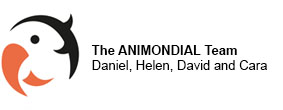
Be Part of the Plan

How everyone, everywhere can help to halt and reverse biodiversity loss
…
Biodiversity is the variety of all life on Earth – the different plants, animals, and microorganisms. It is essential for the provision of a myriad of ecosystem services that provide for basic human needs, underpin human health and wellbeing, and help us to reduce carbon emissions and adapt to climate change.
Biodiversity loss is already having a catastrophic impact around the world. It is no longer considered just an environmental issue but a fundamental threat to our economies and societies, and our ability to fulfil the UN Sustainable Development Goals.
Be Part Of The Plan
…
On 22nd May, the UN International Day for Biodiversity 2024, individuals, businesses, governments and society are being urged to highlight the ways in which they are supporting the implementation of the UN Biodiversity Plan (also called the Kunming-Montreal Global Biodiversity Framework). Everyone has a role to play, so everyone can Be Part of the Plan.
Last month, the Nature Positive Tourism Partnership, in collaboration with ANIMONDIAL, launched the Nature Positive Travel & Tourism in Action report. This highlights actions taken by both private and public Travel & Tourism organisations, from across the world, to protect nature and enhance biodiversity. Travel & Tourism is highly dependent on nature (biodiversity and ecosystem services) and can also have a substantial influence on biodiversity loss – in both positive and negative ways.
Many of the case studies presented in the report feature innovative collaborations between private and public organisations and local communities. They show how diverse organisations can work together to protect animal welfare and endangered species, prevent biodiversity loss, and regenerate nature. Please do check out these case studies, which we hope will inspire and empower meaningful change.
Reversing biodiversity loss and protecting nature does not need to be a huge effort. There are some simple actions that anyone can take to protect and restore biodiversity and to Be Part of the Plan.
As a start, you could:
– Install timer or sensor switches on lights and heating systems– Measure your carbon emissions and progressively reduce them through an action plan
– Capture rainwater and use for flushing toilets, washing clothes, watering gardens, etc.
– Switch to paper straws, cardboard plates and wooden cutlery as disposable options
– Plant native species and wildflowers and minimise use of pesticides
– Check out sustainable options for your key purchases and stick to FSC timber, MSC seafood, etc.
– When looking for suppliers, start local and include sustainability performance in your evaluation
– Safeguard animal welfare, buy high-welfare foods, and ensure wildlife items are legally sourced
– Start supporting a local, community-based nature project – even just through a collection box
– Talk to your partners, suppliers, staff and customers about your nature positive ambitions
It is so easy to Be Part of the Plan to halt and reverse biodiversity loss by 2030!
Identify & measure your nature-related risks
…
To be as effective and impactful as possible when aiming to mitigate your impacts on nature, it helps to identify and measure your nature-related risks. That way you can see where and how your operations and activities are directly or indirectly contributing to biodiversity loss. This, in turn, provides useful insight on where to focus your efforts and resources to best mitigate impacts and build on opportunities to protect and restore nature. This approach is often more impactful and cost-effective than simply applying generic actions, like those listed above, without looking at your own specific case.
ANIMONDIAL has created an evaluation tool to help Travel & Tourism businesses understand their environmental footprint and measure their operational impacts on biodiversity. Called NATOUR IMPACT, it combines both legal obligations and industry best practice to assess business performance and guide actions to halt and reverse biodiversity loss within destinations. Tailored for the Travel & Tourism sector, it offers a simple but effective approach for businesses to Be Part of the Plan.
Your action on International Day for Biodiversity could be as quick and easy as booking in a call with ANIMONDIAL to discuss how you can start your nature positive journey.
Whatever you choose to do, the message is simple. We all can, and should, be doing something to ensure the health of the planet for future generations.
Take action for nature today:
Find out more about the UN International Day for Biodiversity (22 May).
Sign up in support of a nature-positive future and receive free guidance.
Refer to the Nature Positive Travel & Tourism in Action report (May, 2024).
Check out ANIMONDIAL’s Natour Impact environmental impact assessment tool.

The Future of Tourism – in Action!
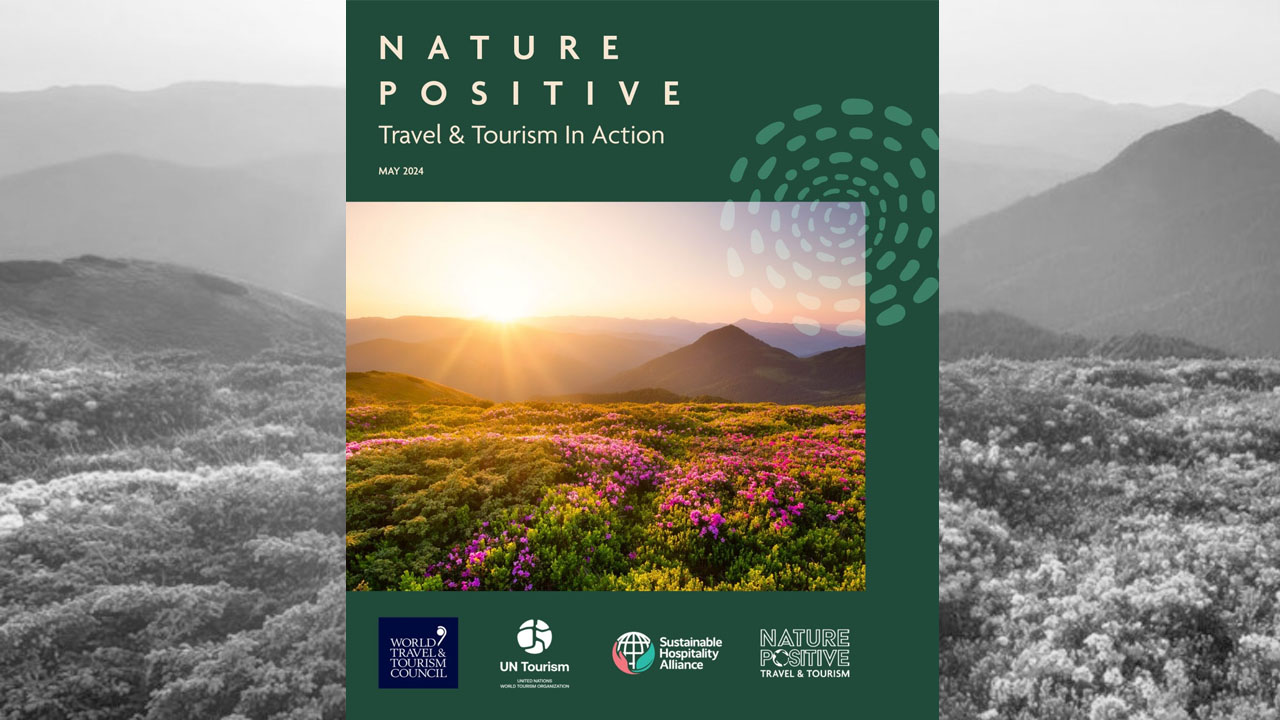
This month, we are celebrating the launch of the new report Nature Positive Travel & Tourism in Action. Published by the Nature Positive Tourism Partnership, and prepared by ANIMONDIAL, this represents a watershed moment for the sector.
…
Following on from the 2022 Nature Positive Travel & Tourism report published by the World Travel & Tourism Council (WTTC), also prepared by ANIMONDIAL, this new document takes a giant step forward. More than a blueprint for change, it is a handbook for sector transformation.
Firstly, it is delivered by a collaboration of industry bodies at the highest international level – the WTTC, UN Tourism and the Sustainable Hospitality Alliance. This partnership is critical for mobilising the entire sector. Businesses can be limited in their ability to realise Nature Positive Tourism if government policies and strategies do not support them. At the same time, government attempts to change their tourism frameworks face countless problems if the private sector is not aligned and co-operative.
Through the Nature Positive Tourism Partnership we now have a road map for the entire sector, public and private, to chart a course to a nature positive future for Travel & Tourism.
Secondly, this report focuses on action. The 2022 report laid out the urgency of the global need to act for nature, the particular relevance of this issue to Travel & Tourism, and the recommended strategic approach for businesses in the sector (the Nature Positive Tourism Roadmap). This report moves on from there to grapple with the specifics of putting these principles into practice.
In doing this, it is guided by the results of an industry-wide consultation that ANIMONDIAL led last year on behalf of the Nature Positive Tourism Partnership. This was a multi-stage process involving over 50 experts from the public and private sectors, civil society and academia. It compiled the sector’s best understanding of its nature-related risks and impacts as well as the challenges and opportunities it is likely to encounter in realising Nature Positive Tourism. (A review of the outcomes of the consultation is available here).
With these insights as a guide, the new report provides practical guidance for businesses of all sizes and types (and for public sector bodies as well). This includes a ‘Biodiversity Basics’ tip for every stage in the Nature Positive Tourism Roadmap, explaining how businesses with limited capacity can easily but effectively begin their nature positive journey.
It also includes over 30 diverse case studies from around the world, illustrating real-world approaches to all the key areas of action. These case studies are what really bring Nature Positive Tourism to life. Every business will face different challenges, but the message of these inspiring stories is that solutions can be found, new ideas and new models are waiting to be explored, and the power of Travel & Tourism to be a Guardian Of Nature is only just being discovered.
With apologies to Winston Churchill, this report is not the end, it is not even the beginning of the end, but it is perhaps the end of the beginning.
A lot of work still needs to happen across the sector – within individual businesses, government bodies, associations, alliances and beyond. We will continue to do that work and to help others do it. We plan to support the Nature Positive Tourism Partnership as they roll out an ongoing programme of events and resources, expected to include webinars, further case studies and representation for the sector at the level of global biodiversity policy.
As you can tell, we are very happy to have played a part in bringing this report to the sector, and to the global business community. Nature Positive Tourism materials are already used by Business for Nature in their sector-specific guidance, which encourages similar initiatives in several key business sectors. It is fitting that Travel & Tourism – which inspires so much love of nature and has such influence over what happens to it – should be among the most progressive in this field.
As lovers of both nature and travel, we believe in a future where the two can co-exist, supporting and enhancing each other. Reading this report, we can see this future come into focus – and we hope everyone else who reads it will too.
Please take a moment to download the report and see how it can inspire you.

Biodiversity Basics
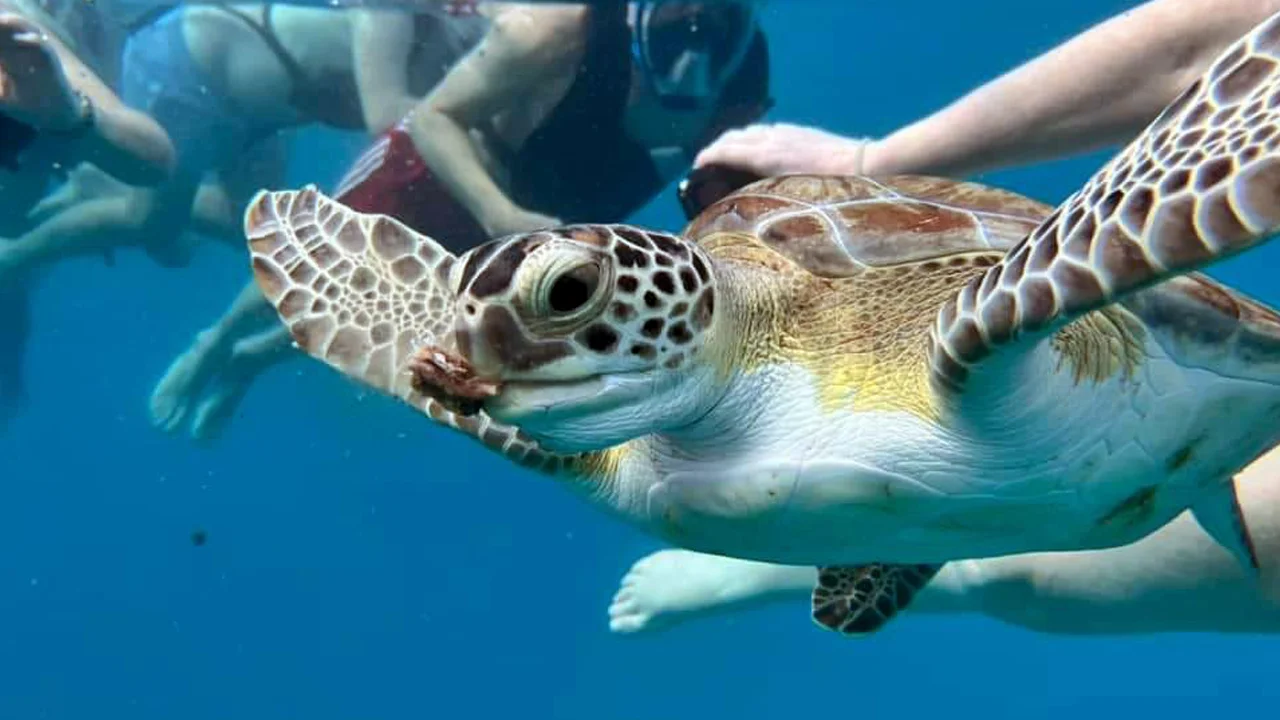
Safeguarding an animal’s welfare has often been regarded as something radical rather than something necessary, at least when compared to protecting species or ecosystems. But respecting an animal’s physical and mental state should be fundamental to any act to protect animals, as individuals, populations or entire species.
…
ANIMONDIAL has its foundations in animal welfare science, and it remains a key topic for us as we strive to empower the Travel & Tourism sector to protect individual animals as much as species. Our reasoning is that you can’t achieve one without the other. Ensuring an individual animal is able to cope with its physical environment, and survive, is the ultimate need. To conserve an endangered species, it is vital to know what elements threaten its survival in order to prevent its extinction. More often than not, this requires an understanding of the species and its species-specific (welfare) needs.
Take wildlife trade as an example. This is considered a major factor in the demise of many species, which may be traded as part of a legal or illegal transaction to rewild a location, stock a zoo, or produce traditional remedies. Failure to safeguard their welfare during trade can result in premature death and the need to source more individuals of that species to fulfil the transaction.
It’s a Science
Protecting an animal’s welfare is a science. It requires applied knowledge, and with millions of different species all having different welfare requirements, lots of knowledge. While there are some general principles, referred to as the Five Freedoms or Domains, every species is unique. All animals, including us humans, need fresh water and nutritious food (one of the Domains), but the needs of a grey parrot are very different from a bottle-nosed dolphin. Seems obvious? Well, until recently all animal species were treated the same, and even today welfare guidance is often applied by family group – for instance treating all primate species the same (from bushbabies to howler monkeys to chimpanzees) when each species has very different welfare needs.
Animal Welfare in Tourism
Informing tourism businesses about welfare science, and empowering them to act on it, is an ongoing need. Decisions on which animal-based activity to sell (e.g. horse-riding, wildlife watching, or visiting an aquarium) are often dictated by factors other than the knowledge of the species. This can create conflict, particularly when people’s livelihoods depend on offering the activity to tourists, or when revenues support a local economy.
Sometimes the best solution for the animals and the people involved is a nuanced one. Continuing an activity while working to improve welfare practices can have a better outcome than walking away and leaving less concerned operators to continue the activity without improvements. I am certainly not suggesting that activities should continue at the sacrifice of an animal’s welfare, but I have seen cases where activities have been axed from itineraries without any consideration to it, and with shocking repercussions.
While animals kept in a captive environment clearly rely on the knowledge of their owner or keeper, safeguarding the welfare of animals in the wild is relevant too. This is not just an issue for endangered species, where poor welfare may impact their survival, but for any animals that are affected by deliberate human activities. Respect for nature is not a principle that can be divided or restricted – it applies to life in all its forms. Customers increasingly appreciate this, and animal welfare issues can be as significant a driver in the marketplace as broader environmental ones. Not taking into account an animal’s welfare in any given situation is a fundamental issue that places tourism businesses at risk – often without them realising.
ANIMONDIAL’s Animal Protection Network supports projects across the world that safeguard animal welfare in captivity and in the wild. Whether they care for orphaned chimpanzees or monitor the impact of viewing tours on whale sharks, their actions are based on animal welfare science. This includes a wide range of topics and disciplines, from resocialising apes traumatised from the pet trade to understanding how the pressures of intensive public interaction may impact individual animals and even their whole population. For instance, intensive wildlife viewing or the feeding of wild animals to offer people the chance to see animals up close, has caused populations to change behaviour, and can place people in danger and even threaten ecosystems.
Nature Positive Tourism
Protecting animal welfare is fundamental to preventing biodiversity loss. Those above examples provide insight and failure to safeguard the individual animal in trade, in captivity or in the wild, may undermine local to regional efforts to protect the species. Meanwhile, for tourism businesses, the reputational benefits of adopting a Nature Positive Tourism approach can be severely undermined if their activities are shown to being damaging to animal welfare.
As climate change displaces ecosystems and species populations, wildlife trafficking drives species to extinction, and plastic poisons habitats, so a failure to recognise animal welfare will result in animal suffering, unnatural behaviours, premature death, and disease emergence. This makes it a critical part of any business plan to protect and enhance biodiversity.
Work with the Experts
Animal welfare principles can easily be researched, but applying them in practice, with full consideration for the species and situations involved, requires expert interpretation. Seek out an expert with relevant experience and recognise that an impartial, informed approach ensures a better outcome for the animals, people and the planet.
Why carbon reduction and nature protection go hand in hand
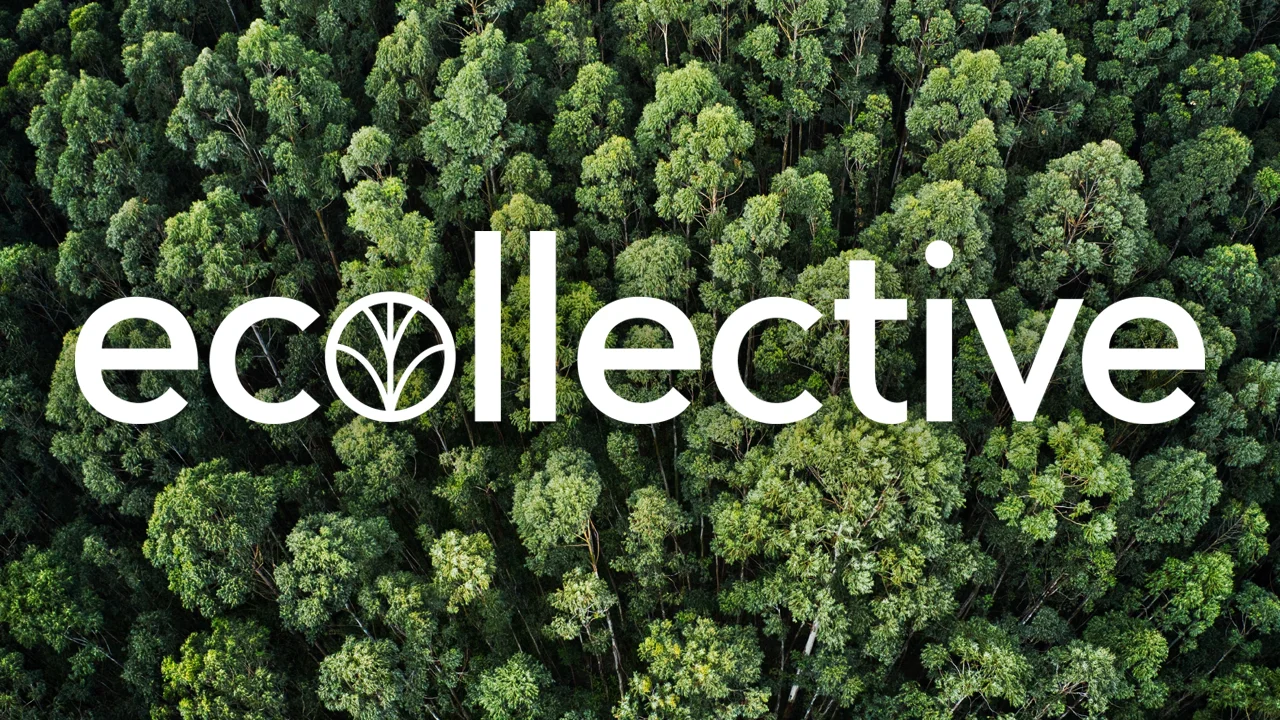
ANIMONDIAL works with Travel & Tourism businesses to improve animal welfare, halt biodiversity loss and promote nature’s recovery. So, you might wonder why we have teamed up with carbon consultancy ecollective to provide an integrated service for carbon reduction and Nature Positive Tourism. What does climate change have to do with animals and nature?
…
The fact is that these two issues are intimately intertwined. Global experts have acknowledged that “neither will be successfully resolved unless both are tackled together” (IPBES/IPCC). Enhancing nature is essential to combating climate change, just as minimising climate change is critical for protecting biodiversity.
Climate change is a key cause of biodiversity loss
Greenhouse gas emissions, primarily from burning fossil fuels for energy and heat, cause the atmosphere to trap more heat from the sun, making our planet hotter. This graph shows how the earth (the air at ground level and the surface of the seas) has been heating up since industrialisation became widespread in the early 1900s.

Graph source: Climate.gov
This rising temperature of the earth – global heating – is having a major effect on biodiversity, and one which is likely to increase. It leads to climate change, which is one of the five key drivers of biodiversity loss identified by IPBES (the Intergovernmental Panel on Biodiversity & Ecosystem Services).
Climate change is responsible for more frequent extreme weather events like storms and droughts, and related natural disasters like floods and wildfires. It can also cause shifts in long-term weather conditions such as seasonal temperatures or rainfall levels. These shifts can make some areas uninhabitable for plants and animals that used to thrive there. It also has a massive effect on the ocean, leading to rising sea levels, marine heatwaves and ocean acidification. This has already contributed to huge biodiversity loss. For example, nearly half of all coral reefs have died in the past 150 years, and further warming threatens to destroy almost all those that remain.
Restoring biodiversity can help combat climate change
But there is another side to the relationship between biodiversity and climate change. Restoring natural areas can absorb carbon from the atmosphere, locking it into plants and soils and helping combat climate change. Planting trees is a well-known way to absorb carbon, but it is much more effective when those trees are part of a natural forest full of other plants and animals. Some other ecosystems, like marshlands and seagrass beds, can be even more effective.
As well as removing carbon from the atmosphere, natural ecosystems can also provide protection from the impacts of climate change. Coral reefs, mangrove forests and other wetlands can reduce damage from violent storms, while woodland and other habitats can slow the flow of rainwater down hillsides, reducing the risk of both flash floods and future droughts. Natural areas, especially forests, can also help to stabilise local climates and reduce the risk of desertification (areas of land turning into desert). Reducing the damage from these events is a benefit to biodiversity itself as well as to local people.
By understanding the complex interconnection between nature and climate, and especially the dangers that global heating poses for biodiversity loss, it is clear we need to address both these issues at once. So what can you do?
Measure, strategise, reduce
The first step is to measure the current emissions of your business. Our partner ecollective is a carbon consultancy that specialises in measuring the carbon footprints of businesses in the Travel & Tourism industry. They not only measure emissions from different sources to find the carbon ‘hotspots’ of your organisation. This information is vital for the next next step in the process: making a plan to reduce those emissions.
To meet the Net Zero target set out in the Paris Agreement, companies need to reduce emissions by 90% by 2050. ecollective can work with you to set ambitious but achievable reduction targets and identify the most effective and efficient reduction strategies.
It makes sense to go through this process in tandem with developing your Nature Positive Tourism strategy, following the ‘assess, reduce, restore’ model. This enables you to produce a full assessment of your dependencies and impacts on natural services and identify actions that reduce and restore in multiple areas simultaneously.
ecollective work with some of the best in the business (check out their testimonials) and can provide other services like Carbon Literacy training to educate and engage your team. They also have lots of advice and resources on their blog that you can access for free.
Having a Net Zero plan is also good for business
Having a Net Zero plan is good for your business as well as the environment since many strategies involve cost-cutting measures such as reducing energy consumption and waste. Companies with active Net Zero plans are also more attractive to top talent and investors and have a higher staff retention rate. With legislation coming thick and fast requiring companies to declare and reduce their emissions, you’re better off starting sooner rather than later.
Combining biodiversity with carbon saves you time
A common mistake travel companies make is to have two separate projects: one measuring carbon emissions, one working on animal welfare and biodiversity. In fact, a Net Zero plan can be part of your Nature Positive Tourism commitment, tackling climate as a threat to biodiversity as well as an environmental challenge in its own right. By working with ecollective and ANIMONDIAL together, you will save time sharing information and producing strategies that are fully aligned.
Ensure your actions have a win-win result
Many actions to reduce carbon emissions also benefit nature, but not all. By combining the expertise of ecollective and ANIMONDIAL, we can give tourism companies a clear strategy that covers emissions reduction and biodiversity protection and enhancement, increasing the overall impact of your remedial actions.
Delivering global goals on climate and biodiversity needs a combination of ambitious land- and ocean-based actions to protect, sustainably manage and restore ecosystems, together with reductions in greenhouse gas emissions. Scientists and policy makers understand that meaningful change will only be achieved at a global level through a joint effort to better protect animals, nature and the climate – and the same is true for your business.
Hopefully this blog has prompted you to start considering your company’s carbon footprint (if you weren’t already).
For more information check out ecollective or get in touch to book a 30 minute, no obligation chat with ecollective.


Nature Positive Tourism – your journey to Net Positive for Nature

Protecting and restoring nature, by maintaining healthy, functioning ecosystems and safeguarding biodiversity, should now be a priority for all governments, businesses, and society. Without nature, we simply do not have the natural resources or services that ensure our survival. Knowing what to do, where to start and how to identify our dependencies and impacts on nature need not be a challenge.
…
ANIMONDIAL has been working with the leading agencies of the Travel & Tourism industry to ensure its sectors and businesses have the information, guidance and tools necessary to scope, assess and reduce their nature-related risks, dependencies and impacts. This has produced a universal approach, called “Nature Positive Tourism”, that encourages businesses to go beyond sustainability and begin to compensate for unavoidable impacts by building back biodiversity.
This year, ANIMONDIAL will focus on raising greater awareness of Nature Positive Tourism: what it is and how businesses can embrace it. A Travel and Tourism Overview has been produced with the global coalition Business for Nature and a further report, Nature Positive Travel & Tourism in Action, will soon be published by the Nature Positive Tourism Partnership. These both support business action and share practical examples of how businesses are benefiting from this approach.
EXODUS Adventure Travels, a 50-year-old UK-based tour operator, is one such business that has integrated the Nature Positive Tourism approach into its operations. Keen to know more, I caught up with Rochelle Turner, Head of Sustainability at EXODUS, to find out how they are getting on.
“It’s been fundamental to our trips that we tread lightly and respect the natural and cultural environment. In the last few years, we’ve taken to ensuring that we’ve got more documented proof of these actions and that we challenge any practices that don’t align with our vision of being a nature positive business.”
Rochelle explains that the IPBES Global Assessment Report on Biodiversity and Ecosystem Services (IPBES, 2019) was the starting point for their plan. It explained the five key drivers of biodiversity loss and helped them identify actions to minimise or avoid unsustainable activities and work towards restoring nature. EXODUS adopted a “simple plan of remove, reduce and restore”, a process aligned with Nature Positive Tourism Roadmap presented in the World Travel & Tourism Council report (WTTC, 2022).
“Through our plan, we identified the things we need to remove entirely (i.e. plastics, any negative wildlife interactions, other waste) and take action to reduce our negative impacts (i.e. reducing our carbon emissions) and where we had an opportunity to bring about positive change and restore nature (investing in rewilding and citizen science activities). All these actions form the basis of our Nature Positive Plan upon which we set goals to 2023. I’ve now been updating this with new actions across the next 3-5 years.”
It is encouraging to see businesses proactively adopt Nature Positive Tourism and demonstrate how it can be applied practically, although this is not without its challenges.
“One of the main challenges as a tour operator is trying to enact change where we don’t have direct control. We can set the policies and minimum standards, but at times and in certain places, it is difficult for them to be reached,” explained Rochelle. “Just a small example – we have a goal to not provide any single use water bottles to our guests and only ever use refillable bottles with clean, purified water. We’re at 94% which is great, but we want 100%. In certain parts of the world and particularly in the aftermath of the pandemic, we are still searching for solutions.”
ANIMONDIAL received similar feedback from a peer review consultation last year – noting the challenges of Nature Positive Tourism integration through the supply and value chains. This will be another area of focus for ANIMONDIAL this year as we continue to work with the Sustainable Hospitality Alliance, the WTTC and the World Tourism Organisation to drive industry-level solutions. However, these potential obstacles shouldn’t stop more Travel & Tourism businesses committing to the Nature Positive Tourism approach and contributing to efforts to halt and reverse biodiversity loss.
Rochelle emphasises the need for businesses to keep their nature positive action plans simple.
“It helps to communicate the message internally and embed the required actions within people’s roles. It also helps provide that all-important evidence and proof that what we say about our trips and how we operate is real and based on a thorough appreciation for what truly brings positive change for nature.”
Travel & Tourism businesses can certainly learn from each other and ANIMONDIAL will be encouraging and facilitating this throughout 2024, noting the need to act now for nature. This will include a series of webinars and practical guidance, delivered through the Nature Positive Tourism Partnership, and various other initiatives to support business and encourage a joined-up approach to protecting nature.
Asked about the priorities for EXODUS this year, Rochelle shared the need to review their Nature Positive Plan, combine their climate change mitigation commitments, and ensure their collective goals align with the Global Goals for Nature.
Whatever your Nature Positive Tourism goals are for the coming year, ANIMONDIAL can help guide you through them. Contact us or book in a call to find out how.
Listed reports and references:
- Global Assessment Report on Biodiversity and Ecosystem Services (IPBES, 2019)
- Nature Positive Travel & Tourism (WTTC, 2022)
- A Travel and Tourism Overview (Business for Nature, 2023)
- EXODUS Adventure Travel’s Nature Positive Plan

From Animal Positive to Nature Positive

Businesses are increasingly recognising the importance of biodiversity and nature. We now understand that a healthy natural environment is vital not only for providing life-preserving services, but as the foundation for future prosperity and social resilience. In response, the consortium Business for Nature has created informative guidance, including clear priority actions to help businesses halt and reverse biodiversity loss, for 12 of the most impactful business sectors.
…
I drafted the Travel & Tourism overview, with Business for Nature, which has since been endorsed by the World Travel & Tourism Council (WTTC) and the Sustainable Hospitality Alliance (SHA). It provides a compelling insight into how Travel & Tourism not only relies on biodiversity and nature but, when managed well, can also support and enhance it. We have the potential to become an agent of change across the whole of society – protecting animals and restoring nature and biodiversity in global destinations.
This is reminiscent of my work with the tourism sector in creating the first ever guidance on animal welfare and how these guidelines then helped shape the future of how animals are treated in tourism. (Animal welfare refers to the physical and mental state of an animal and their ability to cope with given situations such as use in tourism activities.)
It was 15 years ago that I was approached by the Head of Sustainability for the Federation of Tour Operators (a consortium of mainstream tourism businesses) to help introduce the animal welfare topic to the Travel & Tourism sector. In the early 2000s up to 70% of excursion product involved animals – from cultural practices, like elephant or camel riding, to more extreme activities like swimming with sea lions or jaguars and even holding snakes and lions! Tourism businesses had started to question the treatment of the animals involved and the potential risk to their customers, concerns which sparked the need for some industry guidance.
At that time the UK Government’s Animal Welfare Bill was progressing through Parliament. With a focus on the importance of safeguarding the welfare of animals, it recognised their sentience (ability to experience pain or suffering) and required anyone who has animals under their care to ensure they have a life worth living. Working with my colleagues at the time – the sustainability leads in major tourism businesses, the FTO and then ABTA, and other stakeholders – we launched the ABTA Animal Welfare Guidelines in 2013 to much fanfare.
The Guidelines consist of a set of concise booklets, each focused on a type of animal activity (Animals in a Captive Environment, Working Animals, etc.) and containing a set of advised minimum requirements together with best practice guidance. It was a great project to help pioneer, it defined my future career, and to this day the ABTA Animal Welfare Guidelines continue to improve standards in animal care and shape the involvement of animals in tourism. It has even helped influence the new UK law to ban the domestic advertising and sale of Low-Welfare Activities Abroad.
I see ANIMONDIAL’s current work in helping to develop the Nature Positive Tourism approach in a similar light. This approach builds on the legacy of the ABTA Animal Welfare Guidelines – that individual animal welfare matters – and widens our duty of care to the protection of all living things (‘biodiversity’) and their collective ability to support our well-being and survival. The guidance which we helped produce with the WTTC, SHA and UN World Tourism Organisation (UNWTO) cuts through the complexity of a similarly technical but vital topic. Much like the ABTA Guidelines, it provides insight into how tourism operations may have negative impacts, and what mitigation actions are necessary to avoid, minimise or reverse them.
However, for biodiversity, we do not have the ten years that it took the Travel & Tourism sector to fully adopt and apply the ABTA Animal Welfare Guidelines. Governments, businesses and society are required to halt and reverse biodiversity loss by 2030. Fortunately, the Nature Positive Tourism Partnership is working on a range of resources to make this possible. We have thorough reports, a ‘Toolbox of Nature Positive Tourism Resources’, and a wealth of practical case studies (soon to be published). These will provide the broad spectrum of tourism businesses with the information and support they need to reduce their operational impacts and build back nature in their destinations.
ANIMONDIAL is also here to help, of course. Building on our long-term knowledge of animal welfare and the protection of animals in tourism, we have produced the first ever evaluation tool for Travel & Tourism, to help businesses identify and measure their specific impacts on animals and nature. After years of development and testing, NATOUR IMPACT, is now available to businesses that are looking for a bespoke assessment of their operations and guidance on where their limited resources are best directed to protect biodiversity and nature.
Destination Connection

Life may be all about the journey, but travel & tourism is all about the destination. It is about being in a different place, breathing it in, and connecting with it. And that sense of connection is as vital to our efforts to protect and restore nature as it is to the experience of those who visit.
…
Discovering the Disconnect
Unfortunately, making that connection is not as easy as it first appears. In a recent consultation, conducted by ANIMONDIAL on behalf of the Nature Positive Tourism Partnership, the issue of ‘destination disconnect’ was raised several times. Even when business intentions are good, it seems there are difficulties translating this into real improvements for biodiversity on the ground.
Important insights from the Partnership
The consultation itself formed the basis of a new publication by the Partnership, led by the World Travel & Tourism Council, UNWTO and the Sustainable Hospitality Alliance (and co-authored by ANIMONDIAL). Titled ‘A Nature Positive Future for Travel & Tourism’, the report was soft-launched at the UNWTO General Assembly this month, with the full release expected before the end of the year. The consultation, involving 50 experts from business, government, academia and NGOs, underpins the guidance and recommendations, which are supported by a wealth of sector-specific case studies.
Connect to connect
One of the key messages is the need for partnerships of shared purpose. By combining the strengths of businesses, government agencies and civil society, and where relevant, local communities, even the most challenging of obstacles can be overcome. When it comes to connecting with the destination, collaborating with local organisations and communities is a powerful and efficient way to bridge the gap.
Two-way street
Partnering with local groups isn’t just a great way to support their work and achieve nature positive goals, it can also unlock real business benefits. Long-term collaborations can provide opportunities to enhance tourism products and improve local operations, as well being a great source of marketing and PR assets and ESG content. In addition, partnerships with local community groups or NGOs that work in destinations can provide a lifeline of reliable information and data to help businesses report on impact and keep track of what is happening on the ground. For example, through partnering with a local organisation in the depths of the Indonesian rainforest, a business could invest in their expertise to support species protection and biodiversity restoration, as well as to provide regular monitoring information for KPI tracking and ESG reporting.
Tried and tested
Working with local organisations isn’t a new or radical idea – several progressive companies are already doing it. Iberostar, for instance, works with the University of Las Palmas de Gran Canaria to promote sustainable fisheries practice in the Canary Islands, and also with the Mediterranean Institute for Advanced Studies to study and protect seagrass meadows. Meanwhile, Intrepid Travel (through the Intrepid Foundation) supports the restoration and protection of coastal and wetland ecosystems in Victoria through the Blue Carbon Lab and, on one site, working with the Wadawurrung Traditional Owners Aboriginal Corporation. The Maldives is a hotspot for these kinds of partnerships, with InterContinental Maldives Maamunagau Resort protecting and preserving the local lagoon through collaboration with the Manta Trust and Maldivian Manta Ray Project, Four Seasons Resorts collaborating with Reefscapers to restore coral reefs around two islands, and Six Senses Laamu leading the Maldives Underwater Initiative, involving the Manta Trust, Olive Ridley Project and Blue Marine Foundation. The Rhodes Co-Lab is a particularly ambitious effort, involving a collaboration between TUI Group, the local travel industry and the Municipality of Rhodes local government. (These case studies and many more are included in the forthcoming Nature Positive Future for Travel & Tourism report.)
Finding your community
There are more and more ways to ensure a strong connection with communities in your destinations. Our partners at Tourism Cares recently launched an online Meaningful Travel Map which shows the location of responsible and community-connected tourism suppliers around the world. And just this month the Wildlife Heritage Areas initiative announced its first sites, where local people who recognise their natural heritage with a deep sense of pride welcome tourism that benefits nature and their community.
Making it work for you…
So, now you can see the benefits of working with a local partner, how do you go about finding one? Don’t worry – we’ve got you covered! Our Animal Protection Network provides a list of approved animal and nature protection partners in destinations around the world. And if none of these is right for you, our Biodiversity Partnerships service can find local organisations that meet your needs. Just send us a message or book a call to find out more, and we can help your business become a Guardian of Nature.

Biodiversity protections throughout the supply chain
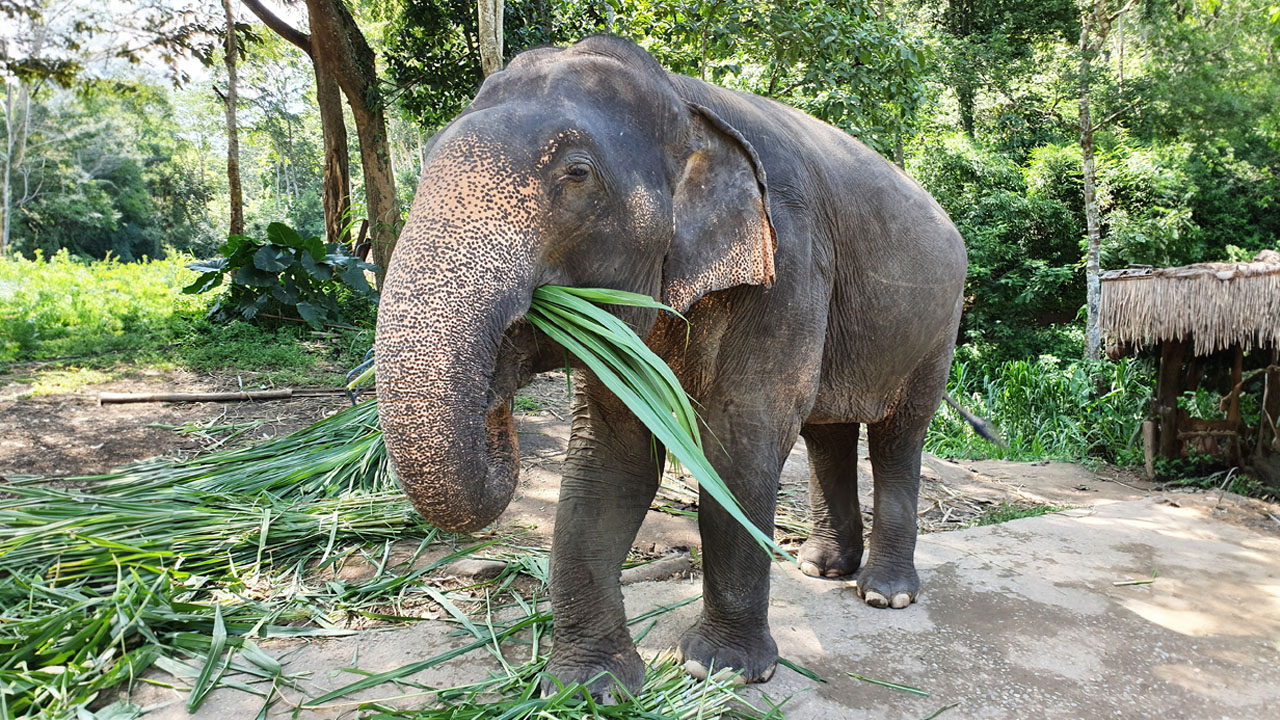
It was through the consultation of both private sector and civil society, as part of our current work with the Nature Positive Tourism Partnership, that ANIMONDIAL identified an urgent need to integrate biodiversity safeguards through the Travel & Tourism value and supply chains.
…
Evidence indicates that the operation of both value and supply chains, largely integrated in the destination, are particularly harmful to nature. Just imagine all the raw materials that Travel & Tourism businesses need to operate. There’s food and freshwater, of course, but then there are the natural materials used for energy and fuel, furniture and furnishings, and all the guest activities that happen in the destination. Travel & Tourism business ultimately need to make sure that the sourcing of materials and their activities on the ground are sustainable and not detrimental to the locations concerned. Flying in millions more people a year into urban and rural locations can take its toll, and on occasion, this causes restricted availability of those resources to local communities. This has generated ill feeling towards tourists and even unrest as local people raise concern about the impact. In some locations, numbers of tourists have been restricted as a result.
Seeking reassurance that the sourcing of raw materials and tourism activities do not have a negative impact can be complex. It requires a need for each business to assess their dependencies and impacts on nature but to also consider the needs of local people. This will need to include an assessment of the business’ direct operations but also their indirect operations, through their respective suppliers.
Working with WTTC and its partners, detailed implementation guidance is now available for T&T businesses (referred to as Nature Positive Tourism), to specifically assess direct business operations. However, unless a tourism business monopolises the activities of its suppliers, ensuring full integration of its Nature Positive commitments, it far more difficult. The assessment of the dependencies and impacts of supply and demand to the destination activities or excursions will largely be reliant on the approachability and interest of the supplier. Another approach may therefore be required to ensure suppliers are mindful of their impacts and are actively seeking to reduce them.
ANIMONDIAL advocates supplier auditing as a guaranteed option to ensuring the right measures are in place and activities are aligned with the business client policies. This is a process, usually undertaken by a third party, that assesses the supplier against the operational requirements of the tour operator, measuring compliance, and providing remedial guidance to encourage improvement. This action has already been deployed to improve animal welfare in global attraction suppliers, and I believe a similar approach is possible using Nature Positive Tourism criteria.
Working with our Partners, the Preverisk Group, ANIMONDIAL is building on its animal welfare auditing criteria to incorporate nature positive objectives and actions. A robust and comprehensive Nature Positive supplier auditing service will soon be available to tourism businesses that are keen to apply their nature positive commitments across the supply chain in their destinations. Combining ANIMONDIAL expertise with global supplier auditing services!
Will you join us?
Preverisk and ANIMONDIAL would welcome collaboration with a travel business partner to help develop this new Nature Positive auditing service and ensure its utmost practical relevance. If you would be interested in playing a leading part in the creation of this new, ground-breaking service to support our sector, please find out more about our partnership with Preverisk, and partnership with Preverisk so we can tell you all about it. Thank you!

Beyond Sustainable Tourism: Embracing Nature Positive
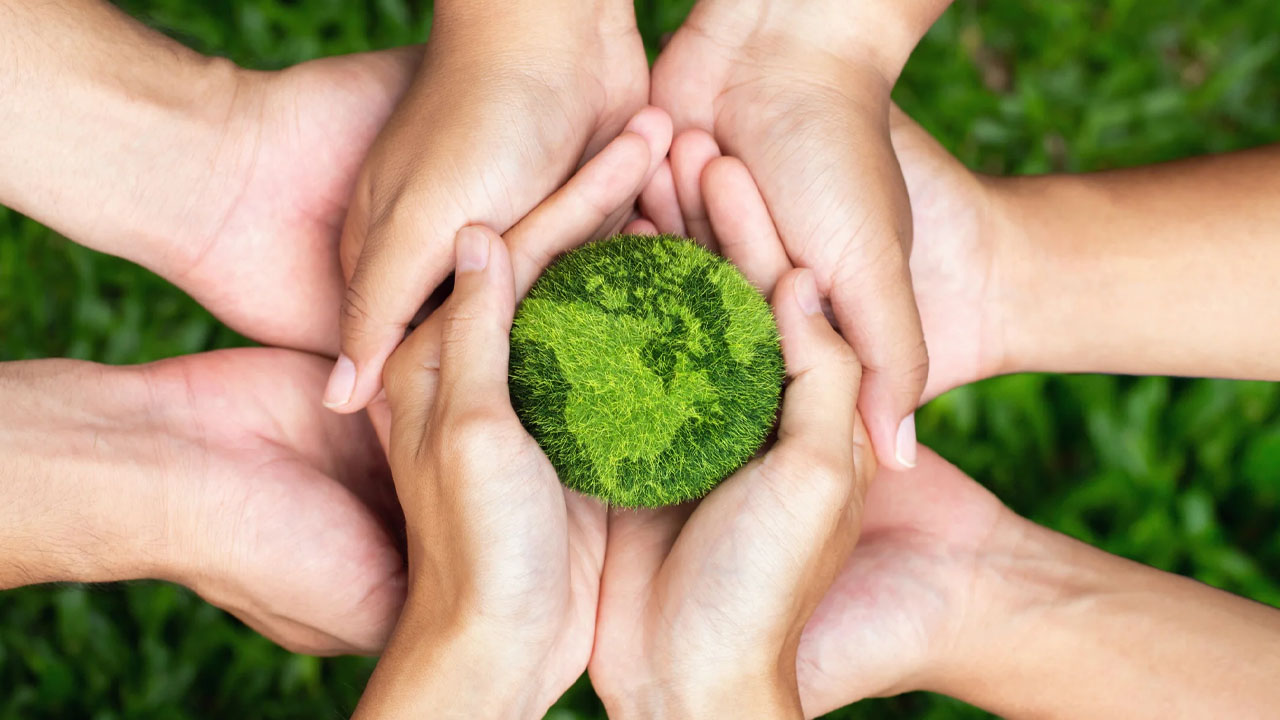
Explores how tourism players can mitigate their impacts and embrace opportunities, to transition to a nature positive world.
…
Creating a sustainability plan can be a daunting prospect. With so many ‘sustainability’ measures to consider, it is easy to feel overwhelmed. From ending poverty and single-use plastics, to managing energy consumption and animal interactions, or halting biodiversity loss and carbon emissions, the expectation on tourism businesses to understand and adopt measures to protect ‘people and planet’ can often result in gridlock.
How to BREAK the gridlock
The UN Sustainable Development Goals (SDGs) are a good place to start, in that they provide clarity on the outputs required to minimise economic, social and environmental risk. However, with most resources displaying the SDGs in numerical order, there is a tendency to select individual Goals without considering their context or recognising the ‘trade-offs’ between them.
The Stockholm Resilience Institute, on the other hand, presents the SDGs as a tiered ‘wedding cake’ (see below). This helpfully illustrates how the economic goals are reliant on the fulfilment of the social goals, which are in turn dependent on the environmental, or biosphere goals (SDGs 6, 13, 14 & 15). This not only demonstrates our reliance on biodiversity and nature for our wellbeing and prosperity but highlights the reasons we must protect it.
One challenge of the SDGs is that they don’t help to define which targets are most relevant for your business and its operational impacts. All too often, we approach sustainability through generic, mainstream actions, rather than considering sector-specific impacts alongside our individual business’ sustainability strategy and which actions are most relevant to achieving it.
SECTOR-specific guidance
Sector-specific guidance provides a clearer understanding of where a business-type has the greatest impact. For instance, the World Travel & Tourism Council’s Nature Positive Travel & Tourism report provides an overall industry perspective, indicating how travel and tourism is both dependent on and impacts nature, together with more specific advice for each sector. The Sustainable Hospitality Alliance’s Pathway to Net Positive Hospitality advises hotels and hospitality businesses, specifically, how to mitigate their impacts on nature – from freshwater usage and food sourcing to GHG emissions and waste disposal.
The more your sustainability planning focuses on sector-specific and individual business operations, and quantifiable impact, the easier it will be to prioritise, and the more effective your actions will be.
ACT for Nature
What is clear from the SDG ‘wedding cake’ model is that businesses must prioritise identifying their dependencies and impacts on nature. Fundamentally, nature provides the resources on which tourism, and the communities tourism operates in, all rely, including our food, water, air, and energy. In fact, most of Hospitality’s goods and services rely on nature. Nature can also be harnessed to create solutions to the challenges set out in the SDGs such as preventing disease, reducing carbon emissions, or providing the ability to adapt to climate change – solutions that are positive for social, economic, governance and environmental outcomes. The threat of nature loss is therefore a threat to business, our economies and societies. Preserving and enhancing nature is, after all, one of the underlying principles of sustainability.
To address this, we need to think about which issues are most relevant to our operations and supply chain, and what actions are needed to address them. This should be the starting point for your sustainability strategy, it is the focus of the Alliance’s Pathway to Net Positive Hospitality, and it is exactly the starting point of Nature Positive Tourism.
EMBRACING Nature Positive Tourism
Nature conservation must be a priority for all businesses, no matter the sector. A Nature Positive approach ensures each business not only identifies and mitigates its specific negative impacts but seeks opportunities to restore and enhance biodiversity. While there will be common themes between businesses, such as reducing plastic use or avoiding deforestation, there will be differences in the range of identified impacts and their severity, and what “regenerative” solutions are available.
We now understand that it is not enough just to consider how we use natural resources; all business efforts must ensure an overall Net Positive impact by conserving and regenerating nature. This can be effectively delivered by understanding the nature around you, investing in nature conservation in your destinations, and seeking opportunities to support and inspire governments, business, and society to help transform humanity’s relationship with the natural world, to become a “Guardian of Nature”.
How to START your Nature Positive approach
- UNDERSTAND travel & tourism’s dependencies and impacts on nature
- ASSESS your business dependencies & impacts on biodiversity and nature
- DEFINE your sustainability plan
- REDUCE your negative impacts on nature and identify opportunities to RESTORE biodiversity
- MONITOR and REPORT on the effectiveness of your Nature Positive approach
- COLLABORATE through Nature Positive partnerships in your destinations and COMMUNICATE about the Nature Positive work you are doing!
Act for Nature
The World Travel and Tourism Council (WTTC), the World Tourism Organisation (UNWTO) and the Sustainable Hospitality Alliance (SHA) have established the Nature Positive Tourism Partnership to help transform the sector to meet its obligations under the UN Global Biodiversity Framework to halt and reverse biodiversity loss and to fulfil its potential as a Guardian of Nature. Find out more and join the initiative.
Learn more:
- Biodiversity Factsheet
- WTTC’s Nature Positive Travel & Tourism Report and Toolbox
- ANIMONDIAL’s NATOUR IMPACT Evaluation Tool to identify your impacts on nature
- Sustainable Hospitality Alliance’s Pathway to Net Positive Hospitality


